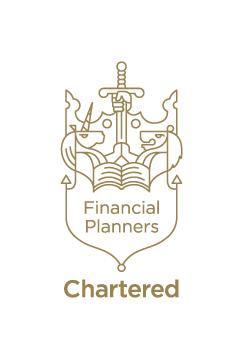There are various pension allowances that you need to be aware of and understand how to make the most of. These limit the amount of money you can contribute to a pension in a year, as well as the total amount of money you can build up in your pension accounts while still enjoying the full tax benefits.
Lifetime Allowance
All your pensions, including workplace pensions, count towards the Lifetime Allowance, with the exception of the State Pension and overseas pensions. The standard Lifetime Allowance is £1,073,100 since 6 April 2020 and increases with inflation each year.
You don’t pay a tax charge until you take your pension savings over and above your Lifetime Allowance (or reach age 75, if earlier). The charge is only on the excess money saved in your pension that is above your Lifetime Allowance.
Non-taxpayer or earning less than £3,600
If you have no earnings or earn less than £3,600 a year, you can still pay into a pension scheme and qualify to receive tax relief added to your contributions up to a certain amount. The maximum you can contribute is £2,880 a year. Tax relief is added to your contributions, so if you pay £2,880, a total of £3,600 a year will be paid into your pension scheme, even if you earn less than this or have no income at all.
This applies if you pay into a personal or stakeholder pension yourself (so not through an employer’s scheme) and with some workplace pension schemes – but not all. The way some workplace pension schemes give tax relief means that people earning less than the personal allowance (£12,500 in the 2020/21 tax year) won’t receive tax relief.
Money Purchase Annual Allowance
The Money Purchase Annual Allowance (MPAA) rules were introduced as an anti-avoidance measure to prevent widespread abuse of the pension freedoms which commenced from 6 April 2015. It’s intended to discourage individuals from diverting their salary into their pension with tax relief and then immediately withdrawing 25% tax-free.
The MPAA applies only to money purchase contributions and has remained at £4,000 since 6 April 2017. If you have taken flexible benefits that include income, such as an ‘Uncrystallised Funds Pension Lump Sum (UFPLS)’ or flexi-access drawdown with income – and you want to continue making contributions to a defined contribution pension scheme – you will have a reduced annual allowance of £4,000 annually towards your defined contribution benefits.
Annual Allowance
The pension Annual Allowance is the maximum amount of money you can contribute towards a defined contribution pension scheme in a single tax year and receive tax relief on. All contributions made to your pension by you, your employer or any third party, as well as any tax relief received, count towards your Annual Allowance.
The standard pension Annual Allowance is currently £40,000, or 100% of your income if you earn less than £40,000. A lower Annual Allowance may apply, however, if you are a high earner, or you have already started accessing your pension. High earners may potentially be subject to the Tapered Annual Allowance, while those who have already started accessing their pension potentially face the Money Purchase Annual Allowance (MPAA).
Carry forward
Carry forward is a way of increasing your pension Annual Allowance in the current tax year. It is used when your total pension contribution amounts for a tax year exceed your annual pension Annual Allowance limit for that year.
You can do this by carrying forward unused allowances from the three previous tax years to make contributions this year. This may enable you to absorb or reduce any pension Annual Allowance excess paid in the current tax year which, in turn, would reduce any potential Annual Allowance charge amount. The 2020/21 tax year allows use of unused allowances from 2017/18, 2018/19 and 2019/20.
Tapered Annual Allowance
The Tapered Annual Allowance calculations will now not affect anyone with a Threshold Income level below £200,000. The taper starts in this tax year at £240,000 and extends to a minimum of £4,000 Annual Allowance. This reduces the level of pension funding high earners and their employers can make into pension schemes.
If high earners exceed the threshold and adjusted income amounts, their Annual Allowance may be reduced by £1 for every £2 of adjusted income over this level until the minimum annual allowance level of £4,000 is reached. The maximum Tapered Annual Allowance reduction is £36,000.
Pension contributions tax relief
Everyone, whether working or not, is entitled to receive basic rate tax relief at 20% from the Government when making contributions to their pension. Depending on the type of pension, tax relief can either be a reimbursement of the tax already paid on a pension contribution or it can be the ability to put away for your pension straight out of your wage, before paying any tax.
Basic-rate taxpayers, and those who don’t pay tax, will earn 20% tax relief. Higher-rate taxpayers earn 40%. For additional-rate income taxpayers, who earn over £150,000 a year, tax relief is 45%. There are other rules that apply for additional-rate payers depending on specific circumstances.
Want to know more about your retirement options? Head to our Retirement Planning Tool to help you make an informed choice.
ACCESSING PENSION BENEFITS EARLY MAY IMPACT ON LEVELS OF RETIREMENT INCOME AND YOUR ENTITLEMENT TO CERTAIN MEANS-TESTED BENEFITS AND IS NOT SUITABLE FOR EVERYONE. YOU SHOULD SEEK ADVICE TO UNDERSTAND YOUR OPTIONS AT RETIREMENT.
INFORMATION IS BASED ON OUR CURRENT UNDERSTANDING OF TAXATION LEGISLATION AND REGULATIONS. ANY LEVELS AND BASES OF, AND RELIEFS FROM, TAXATION ARE SUBJECT TO CHANGE.
TAX RULES ARE COMPLICATED, SO YOU SHOULD ALWAYS OBTAIN PROFESSIONAL ADVICE.
A PENSION IS A LONG-TERM INVESTMENT.
THE FUND VALUE MAY FLUCTUATE AND CAN GO DOWN, WHICH WOULD HAVE AN IMPACT ON THE LEVEL OF PENSION BENEFITS AVAILABLE. PAST PERFORMANCE IS NOT A RELIABLE INDICATOR OF FUTURE PERFORMANCE.
PENSIONS ARE NOT NORMALLY ACCESSIBLE UNTIL AGE 55. YOUR PENSION INCOME COULD ALSO BE AFFECTED BY INTEREST RATES AT THE TIME YOU TAKE YOUR BENEFITS. THE TAX IMPLICATIONS OF PENSION WITHDRAWALS WILL BE BASED ON YOUR INDIVIDUAL CIRCUMSTANCES, TAX LEGISLATION AND REGULATION, WHICH ARE SUBJECT TO CHANGE IN THE FUTURE.


